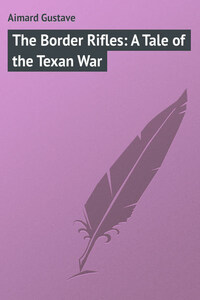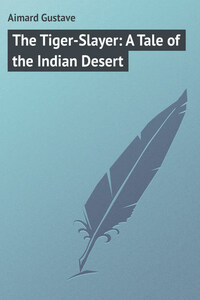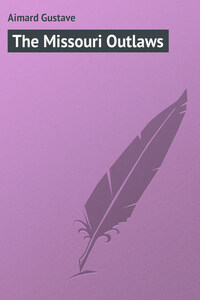CHARTER I
THE VIRGIN FOREST
In Mexico the population is only divided into two classes, the upper and the lower. There is no intermediate rank to connect the two extremes, and this is the cause of the two hundred and thirty-nine revolutions which have overthrown this country since the declaration of its independence. Why this is so is simple enough. The intellectual power is in the hands of a small number, and all the revolutions are effected by this turbulent and ambitious minority; whence it results that the country is governed by the most complete military despotism, instead of being a free republic.
Still the inhabitants of the States of Sonora, Chihuahua, and Texas have retained, even to the present day, that stern, savage, and energetic physiognomy which may be sought in vain among the other States of the Confederation.
Beneath a sky colder than that of Mexico, the winter, which frequently covers the rivers of the region with a thick layer of ice, hardens the muscles of the inhabitants, cleanses their blood, purifies their hearts, and renders them picked men, who are distinguished for their courage, their intelligence, and their profound love of liberty.
The Apaches, who originally inhabited the greater portion of New Mexico, have gradually fallen back before the axe of the pioneers; and after retiring into the immense deserts that cover the triangle formed by the Rio Gila, the Del Norte, and the Colorado, they ravage almost with impunity the Mexican frontiers, plundering, firing, and devastating all they meet with on their passage.
The inhabitants of the countries we alluded to above, held in respect by these ever-shifting savages, are in a state of continual warfare with them, always ready to fight, fortifying their haciendas, and only travelling with weapons in their hands.
El Paso del Norte may be regarded as the outpost of the civilised portion of Mexico. Beyond that, to the north and north-west, extend the vast unfilled plains of Chihuahua, the bolsón of Mapimi, and the arid deserts of the Rio Gila. These immense deserts, known by the name of Apacheria, are still as little investigated as they were at the close of the eighteenth century. El Paso del Norte owes its name to its situation near a ford of the Rio Del Norte. It is the oldest of all the New Mexican settlements, and its establishment dates back to the close of the sixteenth century. The present settlement is scattered for a distance of about ten miles along the banks of the Del Norte, and contains four thousand inhabitants at the most. The plaza, or village of the Paso, is situated at the head of the valley: at the other extremity is the Presidio of San Elezario. All the interval is occupied by a continuous line of white, flat-roofed houses, buried in gardens, and surrounded by vineyards. About a mile above the ford the stream is dammed up, and led by a canal into the valley, which it waters. Apacheria begins only a few miles from this settlement.
It is easily seen that the foot of civilised man has only trodden timidly and at rare intervals this thoroughly primitive country, in which nature, free to develop herself under the omnipotent eye of the creator, assumes an aspect of incredible beauty and fancifulness.
On a lovely morning in the month of May, which the Indians call "the moon of the flowers," a man of high stature, with harsh and marked features, mounted on a tall, half-tamed steed, started at a canter from the plaza, and after a few minutes of hesitation, employed in realising his position, resolutely buried his spurs in the horse's flanks, crossed the ford, and after leaving behind him the numerous cottonwood trees which at this spot cover the river banks, proceeded toward the dense forest that flashed on the horizon.
This horseman was dressed in the costume generally adopted on the frontiers, and which was so picturesque that we will give a short description of it. The stranger wore a pelisse of green cloth, embroidered with silver, allowing a glimpse of an elegantly-worked shirt, the collar of which was fastened by a loosely-knotted black silk handkerchief, the ends passed through a diamond ring. He wore green cloth breeches, trimmed with silver, and two rows of buttons of the same metal, and fastened round the hips by a red silken scarf with gold fringe. The breeches, open on the side half way up the thigh, displayed his fine linen drawers beneath: his legs were defended by a strip of brown embossed and stamped leather, called botas vaqueras, attached below the knee by a silver garter. On his heels enormous spurs clanked. A manga, glistening with gold, and drawn up on the shoulder, protected the upper part of his body, while his head was sheltered from the burning sunbeams by a broad-leafed hat of brown stamped felt, the crown of which was contracted by a large silver toquilla passed twice or thrice round it.
His steed was caparisoned with graceful luxuriousness, which heightened all its beautiful points: a rich saddle of embossed leather, adorned with massive silver, on the back of which the














